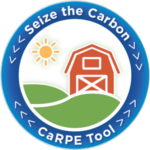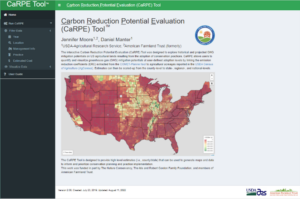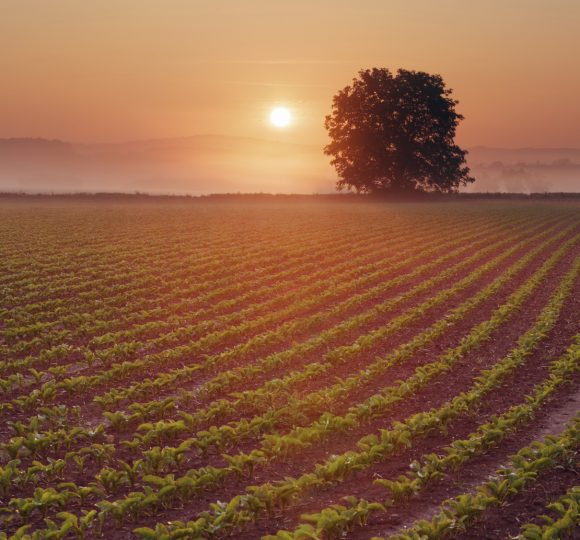
The Carbon Reduction Potential Evaluation Tool, or CaRPE Tool™, is a web-based interactive tool that allows users to quickly visualize and quantify greenhouse gas, or GHG, emission reductions resulting from the implementation of a suite of cropland and grazing land conservation management practices.
CaRPE tool expands the utility of the data reported by COMET-Planner by layering cropland and grazing land acres data from the 2012, 2017, or 2022 (new!) Census of Agriculture.
The tool provides a mechanism to quickly compare practices, their estimated costs, and where the greatest GHG impact can be achieved across county, state, regional, and national scales. The tool’s data and maps help policymakers, conservation and agriculture professionals, and other influencers optimize efforts for cost-effective climate benefits from climate-smart practice adoption in targeted areas and systems.
Recent CaRPE updates allow users to:
- View data by Farm Resource Region (in addition to counties and states)
- See and map the weighted emission reduction coefficient for each scenario
- Choose among four Conservation Practice Classes
- More easily use the slider bars when developing scenarios
- Specify their state’s estimated costs of implementation or use the national averages
- Automatically see data aggregated by region and/or state
- Consult the updated user guide on the CaRPE website



 Who is the tool designed for?
Who is the tool designed for?